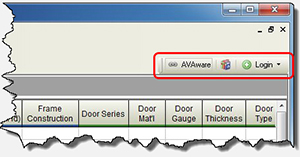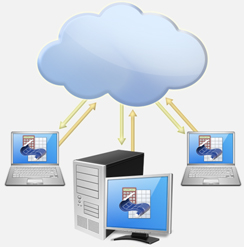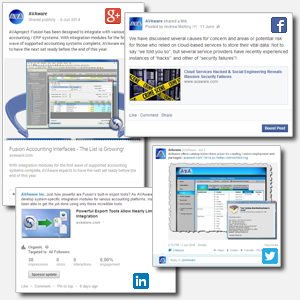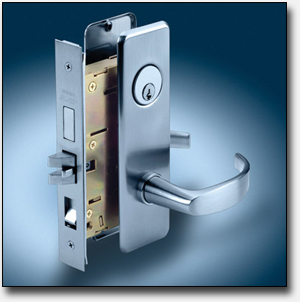
AVAproject “Platform” Update Now Available in General Release!
Share AVAproject and AVAproject Fusion Resources Company-Wide
AVAware Offering Updates and Notifications through Social Media – New Content Posted Daily!
AVAware Welcomes Stainless Doors Inc.
The Challenge of Inventory Management and Architectural Hardware
DHI CoNEXTions 2014: There’s Still Time to Meet in Dallas!

 U.S. Price Books: U.S. Price Books:
- Adams Rite
- Air Louvers
- Ceco
- Dorma E.D.
- Dorma Glass
- Falcon
- Ives
- LCN
- Reese
- Schlage
- Stanley Precision E.D.
- Von Duprin
 Canadian Price Books: Canadian Price Books:
- Bobrick
- Bradley
- Draftseal
- Von Duprin
|

|

|
AVAproject “Platform” Update Now Available in General Release!
|

|
The tech industry often refers to “platforms” and “platform features”. The term “platform” refers to products or features which provide a foundation on which future developments are to be built. AVAware has just released a new version of AVAproject that provides some very powerful new “platform” features that are sure to be real game changers!
|
|
The last two editions of AVAwire featured articles describing major additions to the AVAware ecosystem. For those that may have missed those articles, the following links will provide direct access to them as well as the newsletters themselves. All past editions of AVAwire are made available on the AVAware website at: http://www.AVAware.com/avawire
In the Jan-Feb edition, AVAware announced the ability to maintain individual accounts for each user through a management tool available in the customer portal of the AVAware website. (Link to User Accounts Article,
Link to Jan-Feb 2014 AVAwire).
In the Mar-Apr edition, AVAware announced a stunning new Updater tool that is now built directly into AVAproject. It allows not only catalog updates to be instantly downloaded, but also offers the ability to browse the library of additional catalogs available and download them immediately as well. (Link to Updater Article, Link to Mar-Apr 2014 AVAwire).
These are referred to as “platform” features, because they provide a foundation for future features to be added. The ability to maintain user accounts is particularly important, as it allows software to be developed for remotely deployed PCs that is normally reserved for those that are directly connected to a network server. As an example, system administrators can control which users are able to download catalog updates and which are further able to browse through and install additional catalogs.
After an extensive period of testing, these new features are now available for general release. AVAproject users with active support and upgrade subscriptions may download the June 2014 release from the AVAware website at their convenience.
Preparing for the New Features
In preparation for the new release, and in order to make use of the new built-in ‘Updater’, system administrators are encouraged to do the following:
 The AVAproject login bar
1. Any customers that have made their AVAware website password generally available to users within their organization are strongly advised to change that password and limit knowledge of it to senior management and/or system administrators.
2. Set up individual accounts for the users in your organization that will user AVAware software. This is an extremely quick process and is similar to the process one would use to set up an account on any online service. After adding a user account (using their email address as an identifier) the service will immediately dispatch an email to that user, asking them to verify their email address and select a password for themselves. This will immediately activate their account, which they will then be able to use to log into both the AVAware website and AVAproject (provided their account has been granted the appropriate permissions).
|
Note: Detailed instructions for setting up and configuring the user accounts, their permissions and the various options features offered though the online service, are available through the Customer Portal. As always, customers are encouraged to contact AVAware Technical Support should they have any additional questions or require assistance. |
There are several capabilities offered already through the web-based management console; specifically, system administrators can allow or deny access to every major component of the Customer Portal on an individual user basis. AVAware considers this to be one of them most important new enhancements ever created for the AVAproject ecosystem, and has many exciting new user and management features planned for release in both the short and long term. Even though at this point, the primary reason users have to login to AVAproject itself is to download updates and additional subscription content, it’s still a worthwhile habit for users to get into, as it will help prepare them for the many things to come.
|
|
No sooner has AVAware made their centralized user account feature available for general release, than the development team announces a new feature that utilizes it. There is one very powerful tool that each and every AVAproject user makes use of – without even thinking twice about it. The “tool” in question, is the centralized system that allows AVAware to deploy resources such as subscription files, connector files, logo art and other such company-specific files completely automatically – without even a single click on the part of the users.
AVAware’s “cloud central” is actually a very clever piece of proprietary software, created entirely in-house, that links our internal licensing system directly to web – and as such to our users. Each time a customer resource such as a subscription is updated or a new version of logo art becomes available, it is deployed automatically to each and every user belonging to that company – regardless of where they are. The best part of this type of deployment is that it removes the need to coordinate the effort with all the users; resources are downloaded automatically the next time a user launches AVAproject. Even new installations are made infinitely easier; company-specific resources are automatically downloaded at the same time the software itself is installed.
 This powerful system has definitely saved a great deal of time and inconvenience from days when such files were emailed to customers that had to “drop” them into the correct file directories. AVAware is now making this powerful system available for our clients to use to deploy resources that they have created for use with AVAware software.
This powerful system has definitely saved a great deal of time and inconvenience from days when such files were emailed to customers that had to “drop” them into the correct file directories. AVAware is now making this powerful system available for our clients to use to deploy resources that they have created for use with AVAware software.
The following is only a partial list of the types of resources that can be uploaded to AVAware’s cloud for automatic distribution:
User-created D8 hardware and D10 product catalogs AVAproject Openings Schedule and Material List view style libraries Pre-configured AVAproject project templates AVAcad-created elevation collections AVAproject Fusion filter and report libraries
By using the newly released ‘user account’ management facility, system administrators can designate users as being able to “share” specific types of resources with others in the company.
Due to the complexity of this system and the number of components involved in making it work, AVAware will be conducting an “expanded” beta test of this new product over the summer of 2014. Any current AVAproject users that are interested in assisting with this effort – and get an early opportunity to try this new system should contact AVAware Technical Support.
|
|

It’s often said, “In this connected world, if you’re out of touch… you’re out of business!” While that may or may not be true, AVAware has made certain to always keep “in touch“ with our valued clients through several popular social media services.
From our earliest days, AVAware has endeavored to maintain a vibrant website, filled with news and content that would enhance our users’ experience with all our products. By offering material ranging from product documentation to published articles and technical bulletins, we’ve done our best to ensure that our users always have an abundant base of resources from which to draw information on everything from the use of our products to common technical issues.
In recent years, it has become apparent that many people have chosen to turn to social media services to keep abreast of news and developments for both their personal and business pursuits. For many of these individuals, popular social media sites and mobile apps have replaced traditional email and web-based resources.
It’s for this reason that AVAware has launched an initiative to make all the news and content traditionally offered by our newsletter and website, also available through social media. Having made the first announcement in this year’s first edition of AVAwire, AVAware has already posted a substantial amount of content on all the services listed below, and continue to do so - on a daily basis!
AVAware encourages all their users to “connect” with us through one or more of their favorite social media services in order to receive:
Product and Technical content posted daily New product and catalog announcements Notifications of updated software releases Notifications of updated catalog revisions
|
Note: Users of AVAproject will continue to receive catalog update notifications through the software, provided they have the feature activated. Notifications through social media are intended as a supplementary, and for users whose companies have disabled automatic catalog update notifications via the customer web portal.
|
|
|
AVAware Technologies welcomes Stainless Doors Inc., the newest addition to our growing family of supported manufacturer catalogs.
As the curator of the largest collection of electronic catalogs offered for the architectural hardware industry, AVAware is always eager to add exciting and innovative product lines to our library. A perfect example of which is our newest addition: Hialeah, Florida’s Stainless Doors Inc. This outstanding manufacturer of stainless steel products ranging from doors and frames to side lights and entrance systems is now making their extensive product catalog available for use by AVAproject users.
Stainless Doors’ parent company, EMJAC Industries, is one of the country’s most prolific manufacturers and designers of stainless steel products. Their innovative offerings extend far beyond architectural products, and include such things as stainless steel food service equipment, stainless steel wine towers, animated stainless steel, and more.
AVAproject users interested in adding Stainless Doors to their catalog collection may do so by contacting AVAware support.
For additional information on Stainless Doors Inc., please visit their website at: http://www.stainlessdoors.com
|
The Challenge of Inventory Management and Architectural Hardware
|

|
The unique challenges offered by architectural hardware products have always posed massive challenges for distributors and vendors attempting to implement inventory management software. While other software developers may have promised solutions … AVAware will be the one to deliver.
|
|
For many years now, AVAware has seen distributors and manufacturers alike struggling to implement every manner of ERP and inventory management solution, ranging from the "quick and cheap" to solutions costing tens of thousands of dollars. Although some have been able to coax limited functionality after seemingly endless development initiatives and ever-increasing project budgets - all of them inevitably ask the same question: "Why does it seem like something that every other industry in the world is able to implement routinely, is such a challenge in the world of architectural hardware?"
In reality, it doesn't just "seem" like a challenge… It absolutely is. Architectural hardware presents a number of challenges that make its products, and their management, distinctly different from nearly every other industry on earth. It's a difficult concept to wrap one's head around - let alone fully believe - that a lockset or a closer can be that much different from a hammer or a power drill. Make no mistake about it, they most certainly are. There are a number of key considerations that manufacturers and vendors of architectural hardware have to contend with that not only make this narrow vertical market distinct, but a nearly impossible challenge for conventional management techniques and software.
Product Variations
The most obvious (and problematic) issue is that of product variation. In an article discussing AVAware's catalog technology, a mathematical analysis of a common product catalog was described. After calculating all the combinations and permutations available given the options available for each products (function), it was determined that it was possible to order over 100000000 unique product variations from that one catalog alone!
This was done in order to demonstrate why a conventional "product listing" that satisfies the needs of so many manufacturers is simply not viable for many of the product lines in the world of architectural hardware. Even if one were to go through the machinations of "pre-building" every possible product variation a catalog can offer, each one would have to be re-priced each time a new catalog or even a catalog update is released. This argument is entirely academic, since it's also entirely impractical to even consider maintaining products lists consisting of millions upon millions of unique items for every product line. This was the reason that AVAware's product catalogs were designed to enable users to "build" products based upon available product options on "as needed" basis.
Product Nomenclature vs. SKU Numbers and Field-Length Limitations

A major implication stemming from the massive number of product variation is the inability for manufacturers to use conventional product codes or "SKU" numbers that so many conventional software packages rely on. ("SKU" is an acronym for "stock control unit"; somebody obviously took some liberties with the spelling!) Instead of a short string of numbers, products are identified by a nomenclature string that is built-up using codes and abbreviations for the many options given for a particular product. Depending on the product in question, these nomenclature strings can get very long; some even surpassing 50 characters. Over and above the obvious challenges this raises in the areas of convenience and accuracy, it creates an even larger issue for many software programs that are built with 20-25 character (or less) limits on product codes. These limits were imposed by software designers that were anticipating traditional SKU numbers - not the byzantine codes that are prevalent in many architectural hardware catalogs.
If the computers didn't present enough challenges, humans naturally had to make their contribution to this debacle. Although most catalogs describe a "standard" format for building that string, many detailers and estimators have chosen to evolve their own variations on those standards - just to add their own special touch to an already confusing situation!
Product Matching for Inventory Purposes
Although it's true that many products (locksets for example), have thousands upon thousands of product variations, that doesn't necessarily mean that each one represents a different box on the shelf. Often times a single item (box) can satisfy many different product variations. This is due to interchangeable components and options that can be
 "field modified". A common example of this is handing; many lockets can be switched from left to right handed by the installer - while others need to be ordered for the specific handing required. Since this feature varies from product to product, it presents another challenge for inventory management and ordering software: Can a left-handed 'lockset L1" be used to fill an order for a right-handed "lockset L1"? Door closers offer another common example. While many closers can be ordered with different arm options (i.e.: regular or parallel), many are also packaged with several arms together in the same box. Therefore, several different product variations (and product codes) can be satisfied by the same item. Once again, this varies from product to product and manufacturer to manufacturer. The process of determining whether two different product codes actually refer to two different products is referred to as "product matching". Bear in mind, this is not as simple as identifying two codes as being "the same". In the case of closer, for example, each arm option comes in thousands of its own variations based on the number of product options available. As such, the process of "product differentiation" involves co-relating thousands of product variants to a single box on the shelf.
"field modified". A common example of this is handing; many lockets can be switched from left to right handed by the installer - while others need to be ordered for the specific handing required. Since this feature varies from product to product, it presents another challenge for inventory management and ordering software: Can a left-handed 'lockset L1" be used to fill an order for a right-handed "lockset L1"? Door closers offer another common example. While many closers can be ordered with different arm options (i.e.: regular or parallel), many are also packaged with several arms together in the same box. Therefore, several different product variations (and product codes) can be satisfied by the same item. Once again, this varies from product to product and manufacturer to manufacturer. The process of determining whether two different product codes actually refer to two different products is referred to as "product matching". Bear in mind, this is not as simple as identifying two codes as being "the same". In the case of closer, for example, each arm option comes in thousands of its own variations based on the number of product options available. As such, the process of "product differentiation" involves co-relating thousands of product variants to a single box on the shelf.
The Need to "Mix and Match"
Many of the components that make up or ship with architectural hardware products are designed to be interchangeable. Items such as roses and trims and be easily swapped from one lockset in a product series to another. In order to fill customer orders or to replace lost or damaged parts, distributors often pillage inventory stock for those needed items. In addition, often times multiple products are taken from the shelf and combined to create a required configuration. While an individual with product knowledge may realize that a product order can be filled by combining existing inventory product with the addition of some low-cost components, no inventory control software would be capable of making that determination - unless it were equipped with sophisticated software, programmed with construction details for every product.
Whether it be a result of laziness or a reluctance to "write off" an entire product because of a few parts that have been removed, the resultant product carcasses are left remaining in inventory. This creates a variety of issues from erroneous valuations to short orders due to products that assumed (erroneously) to be in stock.
The long and short of it all is simply this: architectural products are complicated. They cannot be treated like "widgets", in the traditional model used to teach and implement conventional inventory management systems. Clearly, something far more sophisticated, and purpose-designed, is called for.
Manufacturers' Solutions
The difficulties presented by architectural hardware products become apparent in many applications, not the least of which is positioning them into retail environments. All retailers, particularly those of the "big box" variety, require manufacturers to provide conventional product listings - with those pesky SKU numbers. For this reason, many manufacturers have taken small selections of commonly used products in their most typical variations and created lists of items often referred to a "quick ship" or similar designations. These "quick ship" items are pre-selected product configurations that are offered for sale to retailers and distributors, and can be ordered (and managed) using conventional SKU numbers. The moment, however, the slightest change is required to even a single option, it must be ordered using its traditional nomenclature string and is considered by retailers to be a "custom" order.
Conventional Software Solutions
Many software vendors have approached these various challenges; at AVAware we’ve have seen many over the years. Notwithstanding some limited successes, most have fallen disappointingly short.
The most ambitious ones, perhaps because they haven't done the math or perhaps because they don't understand the multiplicity of combinations and permutations, endeavour to create "flat" lists of pre-built products. Some are even foolhardy enough to believe they can pre-build every single possible product variation that each manufacturer offers. AVAware has received numerous requests from brave souls such as these to "pre-build and export" every single product variation in existence. Needless to say, we had to disappoint them and explain the folly of their plans. Quite frankly, even if the product variations were limited and one could pre-build each one, someone would have to manually re-price every one of those variations each time the manufacturer updates their catalog. In some cases, that task alone would take longer than the period of time the price book is even in effect!
AVAware's Solutions
After years of studying this situation and discussing needs and options with our clients, AVAware's development team set out to create a solution that would address the challenges presented by architectural hardware along with all their nuances. From the creation of AVAcad and the often-copied Openings Schedule model, AVAware's industry solutions are some of the most thoughtfully designed and technically advanced software packages available. AVAware's product catalogs are still the only ones ever created that include manufacturer-specific software (created using a proprietary scripting language) that are capable of automatically pricing even the most complicated products. If AVAware was going to offer an inventory solution, it was going to be a good one; needless to say, the developers really rolled up their sleeves for this particular list of challenges!
Building upon the power and flexibility offered by catalog technologies, AVAware has developed a new collection of catalog-related tools and features that are designed to extend the capabilities of the catalogs and make it possible to manage architectural hardware products like never before. This collection of software modules are woven throughout every aspect of the AVAproject system, from the catalogs themselves, to the catalog maintenance tool used to create the catalogs as well as AVAproject and AVAproject Fusion. Collectively, AVAware refers these modules as the "Catalog Kit" and represents a complete "game changer" in terms of how catalogs can be used and their products can be managed. The architectural hardware industry finally has a solution to the challenges presented by these products in terms of inventory control and management.
The “Catalog Kit” is scheduled to go into beta testing in the summer of 2014; look for updates and additional product details in upcoming edition of AVAwire or by following AVAware on any of the popular social media services.
|

Whether or not you’ve wrapped your head around the unique spelling, there’s no denying the fact that CoNEXTions, the DHIndustry Convention is the single largest event held for the architectural hardware industry in North America… and perhaps the world.
The last such gathering took place in Las Vegas, in October of 2012. Being nearly two years since, many of us haven’t had another opportunity to meet with industry colleagues, face-to-face. Being a technology company, no one appreciates the power and convenience of digital communications (i.e. video calls) more than we do. Having said that, we also appreciate and understand the irreplaceable value in meeting clients and vendors live and in person!
 For those that haven’t yet made travel arrangements, may we suggest this is an excellent opportunity to try out Google’s newest product offering: Google Flights. As its name suggests, it is the latest and greatest in online travel services, and can be found at: www.google.com/flights (DFW = Dallas, TX)
For those that haven’t yet made travel arrangements, may we suggest this is an excellent opportunity to try out Google’s newest product offering: Google Flights. As its name suggests, it is the latest and greatest in online travel services, and can be found at: www.google.com/flights (DFW = Dallas, TX)
CoNEXTions 2014 occurs is being held on June 26-27, 2014 at the Hilton Anatole in Dallas, Texas. For additional information, please visit the official website at: http://www.dhiconextions.org or the official DHI website, which can be found at: http://www.dhi.org
Each year AVAware compiles a collection of demonstration material and informative articles and assembles a “convention CD” that is given out exclusively at the AVAware booth.
In addition to its distinctive annual theme artwork (meticulously crafted by AVAware graphics designers, this CD is an extremely helpful resource for anyone interested in learning more about AVAware’s products and the application of technology in the architectural openings industry. Don’t forget to ask for a copy on the show floor!
|
AVAware’s CoNEXTions booth number is #318. If you happen to find yourself in Dallas, please make sure to stop by the booth and visit!
|
|
|
We welcome any questions, comments or suggestions about any topic mentioned in this edition of AVAwire. Please visit our website for more information, or contact us directly at (416) 239-9099.
|
|